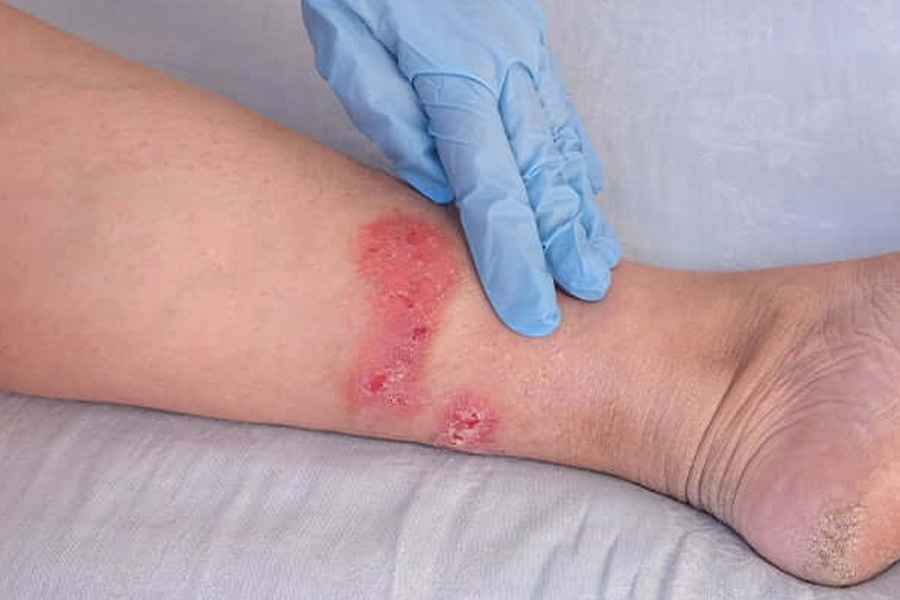
Image Source: dfwwoundcarecenter.com
Necrotizing soft tissue infections, clinically known as flesh-eating diseases are rare but severe that cause bacteria to digest skin, muscles and other tissues. Early and prompt intervention is critical as NSTIs are infectious and carry high mortality. Thankfully, enlightenment on the effective treatment procedures that are obtainable can provide the patient with the finest opportunity for complete healing.
To start with first-hour surgical debridement
If an NSTI is suspected, the initial approach is to get the patient to the operating room for radical surgical débridement. This involves operations to excise all the infected, injured and necrotic tissues to arrest the progression of the infection and the bacterial load, HBOT Scottsdale. Despite this, the debridement undertaken is normally very radical, vastly deeper than the area that appears infected. Further debridement may need to be performed in the first few days to weeks after the initial presentation because it may take several debridement surgeries to clear all the infected tissues.
Even though the removal of tissue tissues may seem counterintuitive to healing, early and aggressive debridement is its great advantage when it comes to Necrotizing soft tissue infections, HBOT Scottsdale. It reduces bacterial count and helps prevent further release of toxins, shows the true extent of infection for further management, and helps the body start healing as many healthy tissues as possible at the soonest time. With antibiotic therapy, the most likely way to achieve patient stability and healing is if debridement is aggressive. The benefits are twofold: it means life compared with delayed or insufficient debridement, HBOT Scottsdale.
Tailored Antibiotic Regimens
 Necrotizing soft tissue infections technically have a polymicrobial nature of aetiology: They are commonly associated with one or more dangerous bacteria. Hence, another important attention is given to the initial, high-dose intravenous antibiotics chosen according to the specific type of infection, Treatment for Necrotizing Soft Tissue Infections. This often entails the administration of potent first-generation antibiotics effective against a variety of Necrotizing soft tissue infection microbes irrespective of the results of the processing microbiology laboratory services. The infectious disease team then optimizes the regimen based on the results of the culture when they are back.
Necrotizing soft tissue infections technically have a polymicrobial nature of aetiology: They are commonly associated with one or more dangerous bacteria. Hence, another important attention is given to the initial, high-dose intravenous antibiotics chosen according to the specific type of infection, Treatment for Necrotizing Soft Tissue Infections. This often entails the administration of potent first-generation antibiotics effective against a variety of Necrotizing soft tissue infection microbes irrespective of the results of the processing microbiology laboratory services. The infectious disease team then optimizes the regimen based on the results of the culture when they are back.
This evidence shows that having an optimal, lab-guided antibiotic therapy significantly enhances the NSTI treatment advantage. IV antibiotics used in this process are potent and gain therapeutic levels to combat the residual infection after the debridement, HBOT Scottsdale. Subculture adaptations suitably aim at the relevant agents of disease. This multiple synergistic antibiotics approach also reduces the development of drug resistance. In general, the combination of surgery and antibiotics provides additional opportunities to cope with these virulent infections.
The Role of Integrated Critical Care
NSTIs as a surgical condition are best managed if multidisciplinary; the surgical team, the infectious disease specialist, the intensivist team and the nursing staff, among others, HBOT Scottsdale. Critical care requires close supervision of fluids, blood gases, kidney function, blood circulation, nutrition, pain control, mental state, status of wounds, and indication of further infection. Patients need to be stabilized by using IV fluid resuscitation, transfusion, and mechanical ventilation, among others. Sepsis, organ dysfunction, and electrolyte disturbances are some of the challenges that demand quick management facilitated by critical care consolidation.

